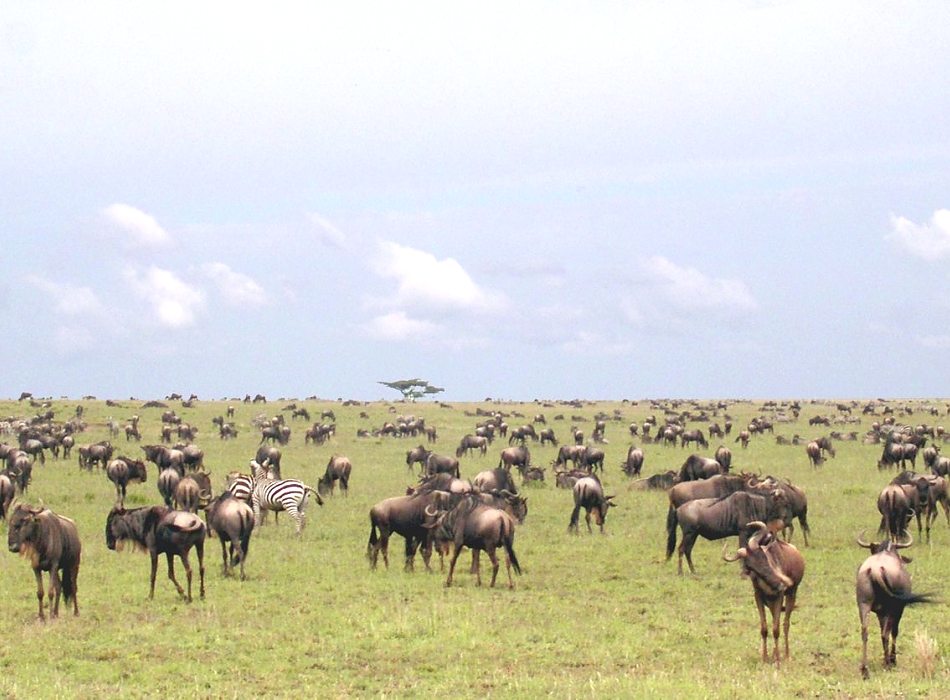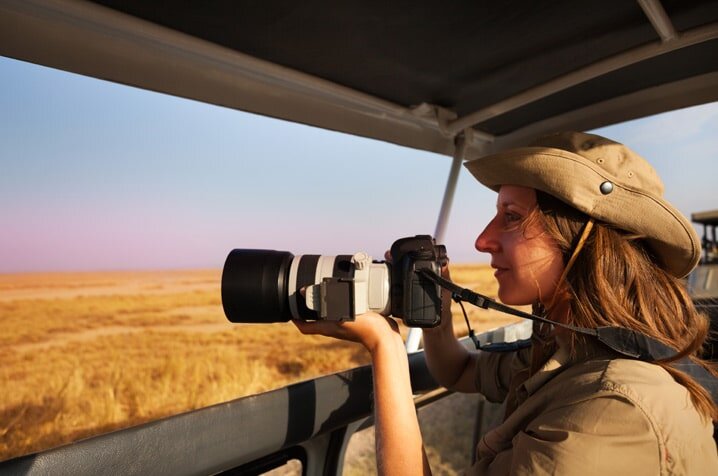

The Park is located 335km (208 miles) from Arusha, stretching north to Kenya and bordering Lake Victoria to the west. Its size is 14,763 sq km (5,700 sq miles). Serengeti can be reached through scheduled and charter flights from Arusha, Lake Manyara and Mwanza. Drive from Arusha, Lake Manyara, Tarangire or Ngorongoro Crater.
The best exciting attraction is the annual wildebeest migration where by a million wildebeest each one driven by the same ancient rhythm, fulfilling its instinctive role in the inescapable cycle of life.
Serengeti is Tanzania’s oldest and most popular national park, also a world heritage site and recently proclaimed a 7th world wide wonder, as more than 200,000 zebra and 300,000 Thomson’s gazelle join the wildebeest’s trek for fresh grazing.
Apart from this magnificent migration, the Serengeti offers arguably the most scintillating game-viewing in Africa: great herds of buffalo, smaller groups of elephant and giraffe, and thousands upon thousands of eland, topi, kongoni, impala and Grant’s gazelle.
Predators like lions and leopards always abundance of grassers like antelopes, gazelles etc
But there is more to Serengeti than large mammals. Gaudy agama lizards and rock hyraxes scuffle around the surfaces of the park’s isolated granite koppies. A full 100 varieties of dung beetle have been recorded, as have 500-plus bird species, ranging from the outsized ostrich and bizarre secretary bird of the open grassland, to the black eagles that soar effortlessly above the Lobo Hills.
enjoyable activities here are hot air balloon safaris, walking safari, picnicking, game drives, Maasai rock paintings and musical rocks. For pleasure view of wildebeest migration, December-July is good tim; but to see predators June-October is favorable time.
Migration Routs
- Dec: The migration started leaving Kenya’s Maasai Mara in November. It moves quickly south down the Loliondo boundary. The rains have started and fresh grass covers the Serengeti plains.
- Jan: The migration is settled in the short grass lands on the southern plains. Game moves into the Ngorongoro Crater. Zebra are foaling.
- Feb: Over 2 million wildebeest, zebra, gazelles, eland and predators are in the Serengeti plains. Wildebeest are dropping foals.
- Mar: The heavy rains are approaching and the short grass plains are starting to take strain.
- Apr: The migration starts moving slowly through woodlands towards the western corridor as the long or heavy rains set in. The wild flowers come out in full bloom.
- May: The migration follows the Mbalageti river towards the Grumeti Controlled Area where the long grass plains and woodlands provide food.
- Jun: The rains are ending and the dry season is approaching as the migration crosses the Grumeti River -the Grumeti crocodiles enjoy their annual feast.
- Jul: The migration moves north east through the Grumeti towards the Ikorongo Controlled Area. Some migratory animals move towards the Lobo area.
- Aug: Most of the migration is concentrated in the Ikorongo area where the Mara is crossed to get into the sweet grasses of the Maasai Mara.
- Sep: The migration moves into Kenya’s Maasai Mara in search of water and fresh grazing.
- Oct: The Serengeti is near the end of the dry season, water is available in the Maasai Mara.
- Nov: The migration starts moving south in anticipation of the new seasons rains which are usually about to start.
